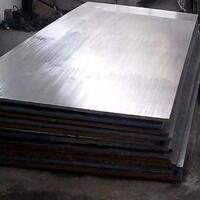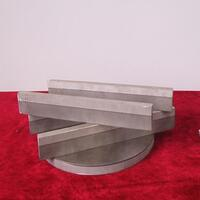1. Introduction
Just 24 hours ago, a major storm system swept across the Midwest, leaving thousands of homeowners inspecting their metal clad buildings for damage. Social media was flooded with photos of dented corrugated steel facades and compromised metal clad roofs—highlighting just how crucial proper maintenance and troubleshooting are for these modern exteriors. Whether you’re living in a sleek steel clad house or managing a commercial metal clad building, knowing how to handle common issues can save you time, money, and headaches.

Metal clad systems—ranging from corten steel siding to pac clad standing seam roofs—offer durability, aesthetics, and energy efficiency. But without the right care, problems like corrosion, poor insulation, or electrical hazards can arise. In this guide, we’ll walk you through seven frequent challenges and give you actionable, step-by-step fixes.
2. Rust and Corrosion on Corten Steel Siding
Corten steel siding is prized for its weathered look, but improper installation or exposure to salt air can cause premature rust that compromises structural integrity.
- Inspect the siding for flaking or powdery rust—this indicates active corrosion, not the stable patina Corten is known for.
- Clean affected areas with a wire brush and rinse with fresh water.
- Apply a rust-inhibiting primer followed by a clear sealant designed for weathering steel.
- If replacing panels, match the original corten steel plate thickness (often 1/8 inch steel plate or 3/16 metal plate) to maintain uniform appearance and performance.
3. Leaks in Metal Clad Roofs
Standing seam metal siding and zinc clad roofs are generally watertight, but leaks often occur at seams, flashings, or around penetrations like vents.
Check all seams and fasteners for gaps or loose clips. For colorbond standing seam or pac clad hwp systems, ensure snap clad clips are properly seated.
Re-seal joints with a high-quality butyl tape or polyurethane sealant rated for metal roofs.
Inspect pac clad coping and column covers—common leak points on commercial metal clad buildings—and reattach or replace if warped.
4. Poor Insulation in Metal Clad Walls
A metal clad wall without proper insulation can lead to condensation, energy loss, and interior moisture damage.

Add metal clad insulation behind the exterior skin—rigid foam boards or mineral wool work well.
Ensure a vapor barrier is installed on the warm side of the insulation to prevent interstitial condensation.
For sheds or workshops, consider aluminum clad pipe insulation around internal conduits to reduce thermal bridging.
5. Electrical Wiring Issues with Metal Clad Cable
Metal clad electrical wire (often called MC cable) is common in commercial and residential settings, but incorrect handling can cause grounding faults or code violations.
- Always use listed fittings when connecting metal clad cable to junction boxes.
- Never strip the armor too far back—exposed conductors increase short-circuit risk.
- In Pennsylvania and many other states, MC cable can be used outdoors if rated for wet locations (look for ‘W’ or ‘WT’ markings).
- Verify that AFCI protection is used per local code, especially in living areas—even with armored cable.
6. Fading or Chalking on Metal Clad Siding
Over time, UV exposure can cause color fade on exterior corrugated metal siding or zinc metal siding.
Wash the surface with mild detergent and water to remove chalk residue.
For aluminum clad steel or stainless clad aluminum panels, avoid abrasive cleaners that scratch the finish.
Repaint using a high-quality acrylic or PVDF-based paint formulated for metal substrates. Match the original sheen and color for seamless results.

7. Dents and Scratches on Metal Facades
From hail to accidental impacts, metal facades like corrugated steel facade or copper siding can dent easily.
For minor dents in steel plate or aluminum diamond tread plate, use a rubber mallet and backing block to gently reshape the metal.
Deep scratches on stainless steel plate or brass metal plate may require professional refinishing.
Consider protective films during construction to prevent damage to pac clad column covers or vertical standing seam metal siding.
8. Choosing the Right Clad Metal for Repairs
Not all clad metals are interchangeable. Understanding clad metal meaning helps you select compatible materials.
Aluminum clad stainless steel offers corrosion resistance with strength, while titanium clad or inconel 625 overlay suits high-heat or chemical environments.
For residential siding, zinc clad dormer or corten steel plate are popular for aesthetics and longevity.
Always verify ASTM standards (like ASTM A387 for alloy plate) and match thickness—common gauges include 1/8 inch steel plate, 3/16 steel plate, or 3mm aluminium checker plate.
9. Conclusion
Metal clad systems blend form and function, but they demand informed care. Whether you’re troubleshooting a leaky zinc clad roof, repairing dented corten siding, or safely running aluminum clad wire through an exterior wall, the right approach prevents bigger issues down the line. With these practical fixes, your metal clad house or building will stay resilient, efficient, and visually striking for decades.
Our Website founded on October 17, 2012, is a high-tech enterprise committed to the research and development, production, processing, sales and technical services of ceramic relative materials such as 7. Our products includes but not limited to Boron Carbide Ceramic Products, Boron Nitride Ceramic Products, Silicon Carbide Ceramic Products, Silicon Nitride Ceramic Products, Zirconium Dioxide Ceramic Products, etc. If you are interested, please feel free to contact us.
